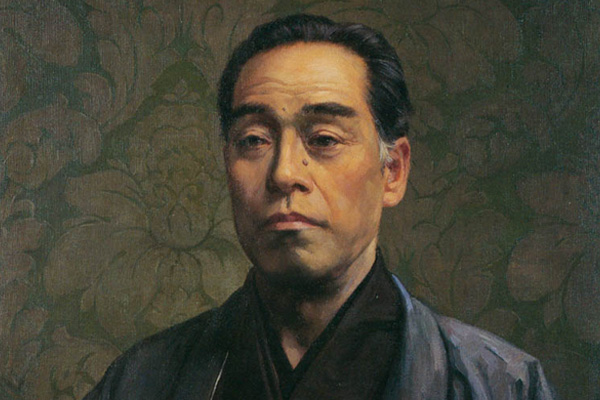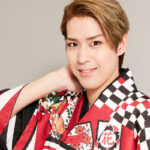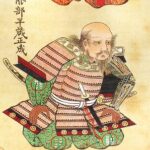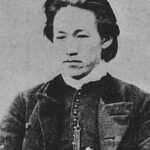

福沢諭吉 Yukichi Fukuzawa
1835-1901
An Educator Who Overcame Hierarchy with the Power of Learning and Supported Japan’s Modernization
Have you ever seen Japanese banknotes? There are three types of Japanese bank notes: the 1,000 yen note, the 5,000 yen note, and the 10,000 yen note, each of which features an important figure in Japanese history. In this article, we will introduce you to Yukichi Fukuzawa, whose portrait appears on the 10,000 yen note.
Childhood and the Development of His Academic Talent
Yukichi Fukuzawa, whose portrait is featured on the 10,000 yen note, was the founder of Keio University. Keio University is one of the most famous private schools in Japan. However, he also had a mischievous side that was not typical of educators.
He was born on January 10, 1835, as the youngest child. He had one older brother and three older sisters. It is said that as a child, he was a naughty boy. His father died suddenly when he was very young, and the family was destitute. He spent most of his youth doing chores, and when he was 14 years old, he was able to obtain funds for his education and finally begin his studies. And once he began his studies, his talents blossomed.
In school, he excelled in almost every subject, and the arrival of the American fleet in the summer of 1853, when he was 18 years old, had a profound impact on the paths of his life. He moved to Nagasaki, where the Dutch trading post was located, and began efforts to deepen his understanding of Western culture.
In 1859, Japan finally opened three ports to Western traders. In one of them, Yokohama, Yukichi spoke Dutch to foreigners as a trader, but they could not understand him at all, and this is when he realized the importance of English. In the spring of 1860, at the age of 25, he volunteered to join an American mission in San Francisco, where he spent a month and returned home with a variety of books.
Two years later, he went to Europe, spending 44 days in England, 42 days in France, 20 days in Germany, 35 days in the Netherlands, 20 days in Portugal, and 46 days in Russia. A year later, at the young age of 30, he returned to Japan with a vast amount of knowledge and books. In Europe, he was exposed to cutting-edge civilizations such as steam locomotives and electric devices, which stimulated him. He was amazed by things that did not exist in Japan at that time, such as banking, postal services, conscription, elections, and the parliamentary system, so he worked hard at translating them to bring them to Japan. It is told that he was the one who brought the concepts of insurance and bookkeeping to Japan, and in 1867 he went to the United States again, visiting Washington D.C., Philadelphia, and New York.
Believing that Japan needed more education to develop for the future, he set out to establish private schools. For these reasons, he can be considered the father of modern education, having laid the foundation for modern education.
His Most Important Belief
Through these travels, Yukichi realized that technological advances had made Western countries richer thus that was necessary to make the same revolutionary changes in people’s knowledge and thinking in Japan. After returning to Japan, he decided to create a school to teach others based on his beliefs and experiences. This was Keio University.
In 1867, about 100 students gathered at Keio University and he lectured mainly about politics and economics himself. He also invited professors from abroad to provide a completely new style of education. At the same time, he produced many famous books, most notably “Gakumon no Susume (Encouragement of Learning).” Written in this book is the famous phrase that every Japanese individual has heard at least once, “Heaven does not create one man above or under another man.” At the time, these words, which he first published in 1872, began a starting point for a new way of thinking in Japan. He wrote, “Society is equal, and opportunities for education are equal.” The main content of his essay is his belief that “society should be equal and educational opportunities should be equal, so that those who excel, no matter what their circumstances, can occupy positions of power and influence for the betterment of society as a whole.”
This belief put an end to the privilege and dictatorship of Japan at the time and gave hope to the entire nation, which yearned for a new society where individuals would be perceived based on their abilities rather than caste or wealth. This was the beginning of today’s modern Japan.
Supporting the Modernization of Japan from an Academic Perspective
Living during the period of the Meiji Restoration, when Japan’s nearly 300-year isolation from the rest of the world ended and rapid political and cultural modernization began, Fukuzawa made three trips to Europe and the United States to study Western civilization. During this time, he realized that a new educational system incorporating Western systems was necessary for Japan to become independent in a rapidly modernizing and changing world. He was a great inspiration to the Japanese people. He actively pursued scientific knowledge against a backdrop of drastic political and social changes and played a major role in Japan’s rush through the modernization period at the end of the 19th century. His writings were widely read by both adults and children, and his picture is depicted on the 10,000 yen note, the highest denomination bill in Japan today.
The 10,000 yen note itself has been issued since 1958, with Prince Shotoku’s portrait appearing on the bill from 1958 to 1983 and Fukuzawa Yukichi from 1984 to the present. According to the Ministry of Finance, Yukichi Fukuzawa was chosen for the portrait on the 10,000 yen note because, as the highest denomination, his portrait is appropriate for a dignified banknote, and because the person in the portrait is a well-known cultural figure, both generally and internationally, since the Meiji era.
And to our surprise, it has been decided that in 2024 the bill will be renewed for the first time in 20 years!
In the remaining two years, we hope to see many faces of the great individuals who promoted the modernization of Japan.
<出典元>
https://youtu.be/iyDka14s9S8
https://www.youtube.com/watch?v=AwsWnh4_TpY
https://colorfl.net/fukuzawayukichi-osatsu/
https://www.keio.ac.jp/ja/about/philosophy/fukuzawa.html
.
.
.
.
.




